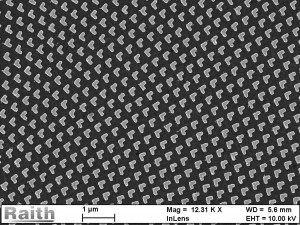We are also working on the use of plasmonic devices in photonics. We are especially interested in developing devices based on the use of surface plasmon polaritons (SPPs), structures that confine light along metal-dielectric interfaces in regions much smaller than that light’s wavelength. This tight confinement can allow a tight packing of photonic devices in a small footprint, a key feature of highly integrated photonic circuits currently under development. Also, because metals are highly nonlinear and the light is tightly confined, SPPs produce a large nonlinear phase shift per unit length of propagation. Unfortunately, SPPs tend to show high loss, but University of Ottawa colleague and collaborator Pierre Berini has developed means for dramatically increasing the propagation distance of SPPs. Our joint research will consider the technical challenges surrounding the design of plasmonic amplifiers, lasers, modulators, and detectors, which could be used for telecommunications as well in more exotic settings, such as biochemical sensors that report on the chirality of organic molecules. The nonlinear photonic interactions driving these devices would open up the possibility of much more efficient nanoscale switching structures, which could become a staple item in the next generation of information technology and communications infrastructure.
Plasmonics
